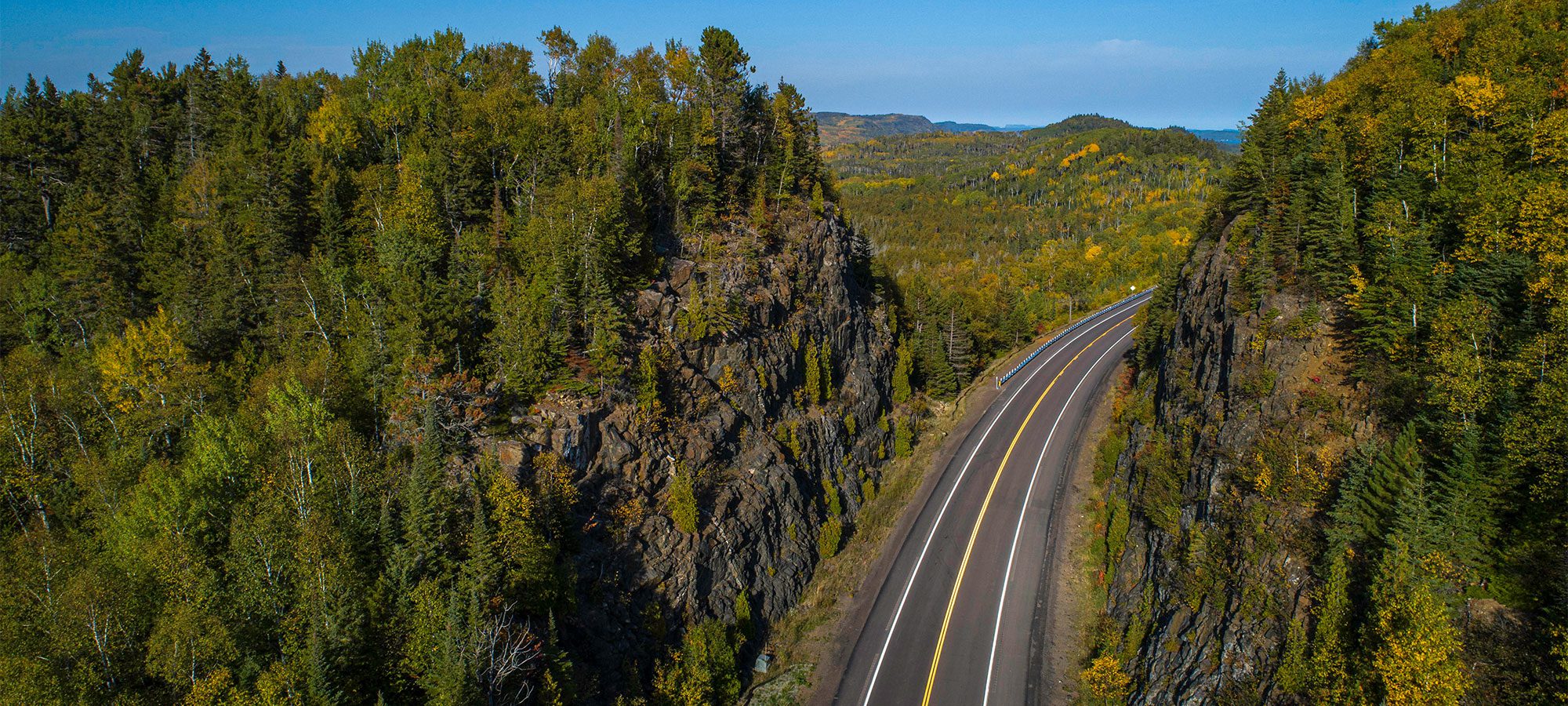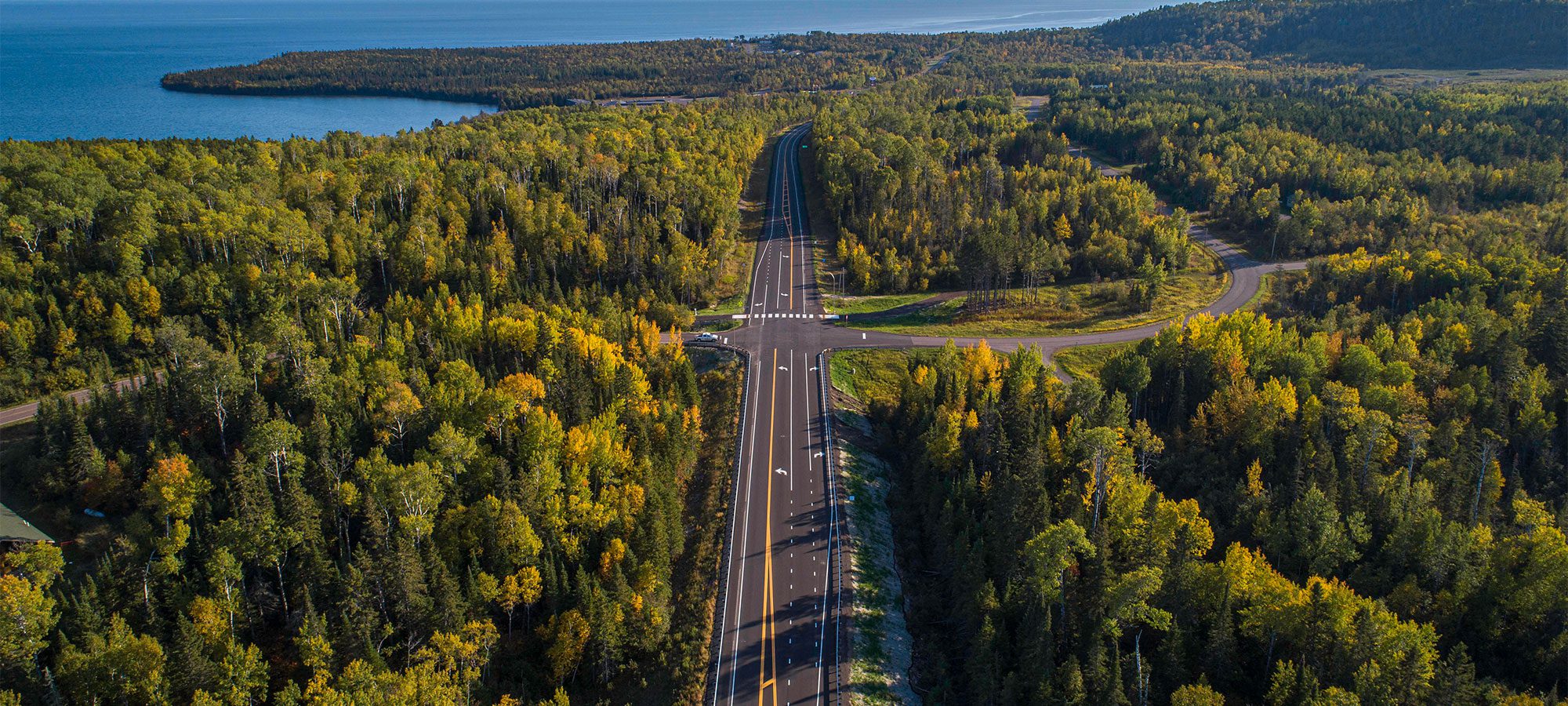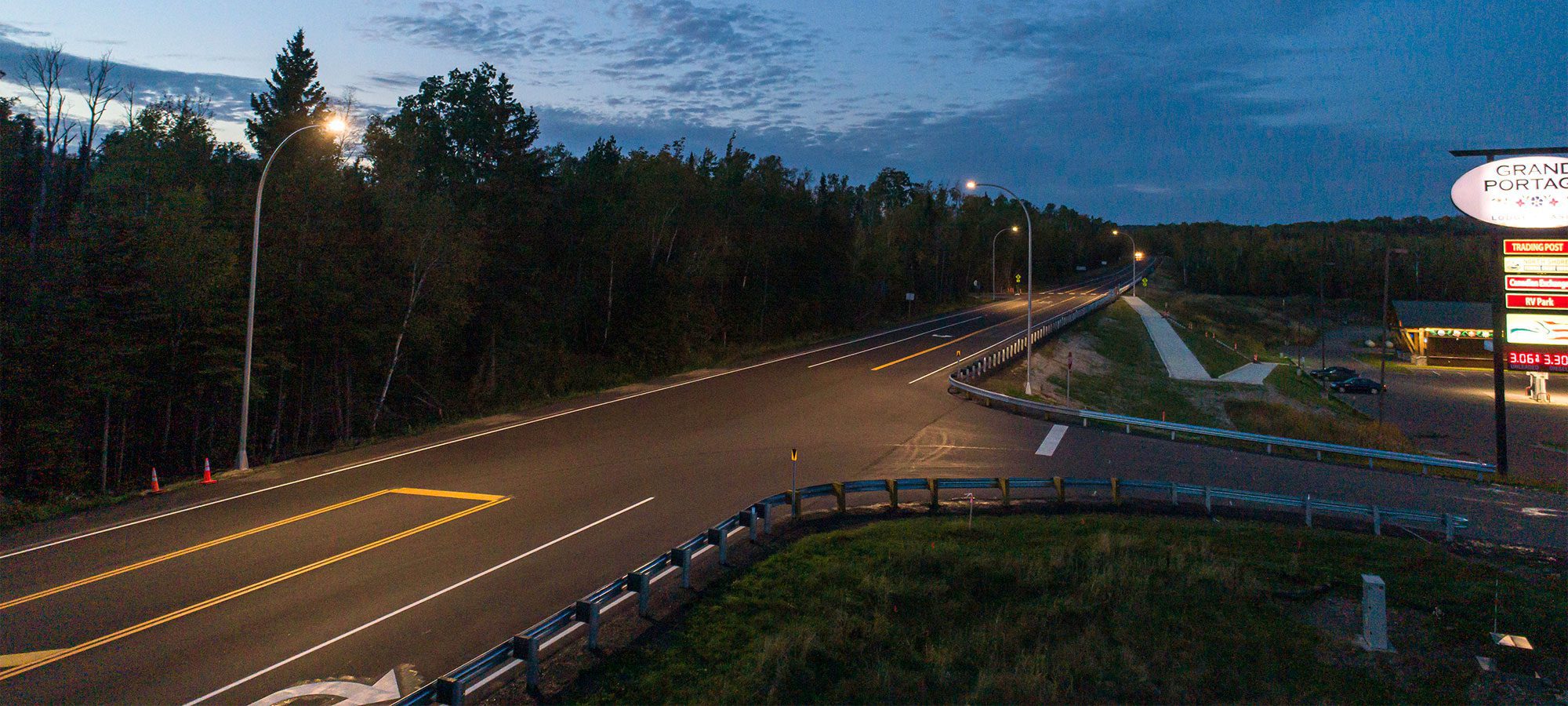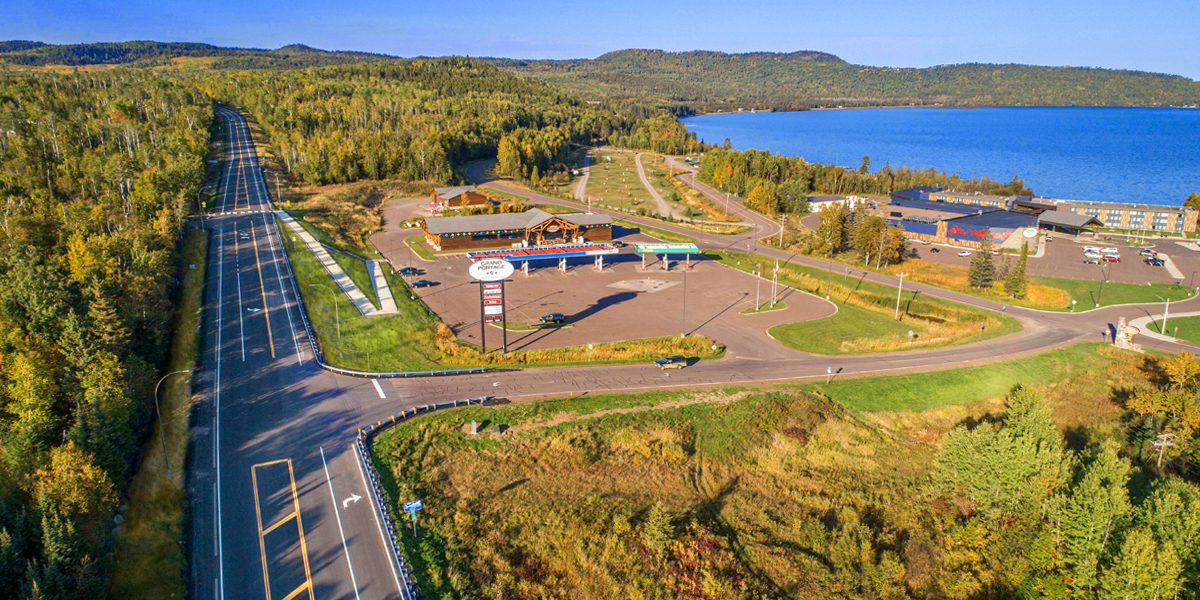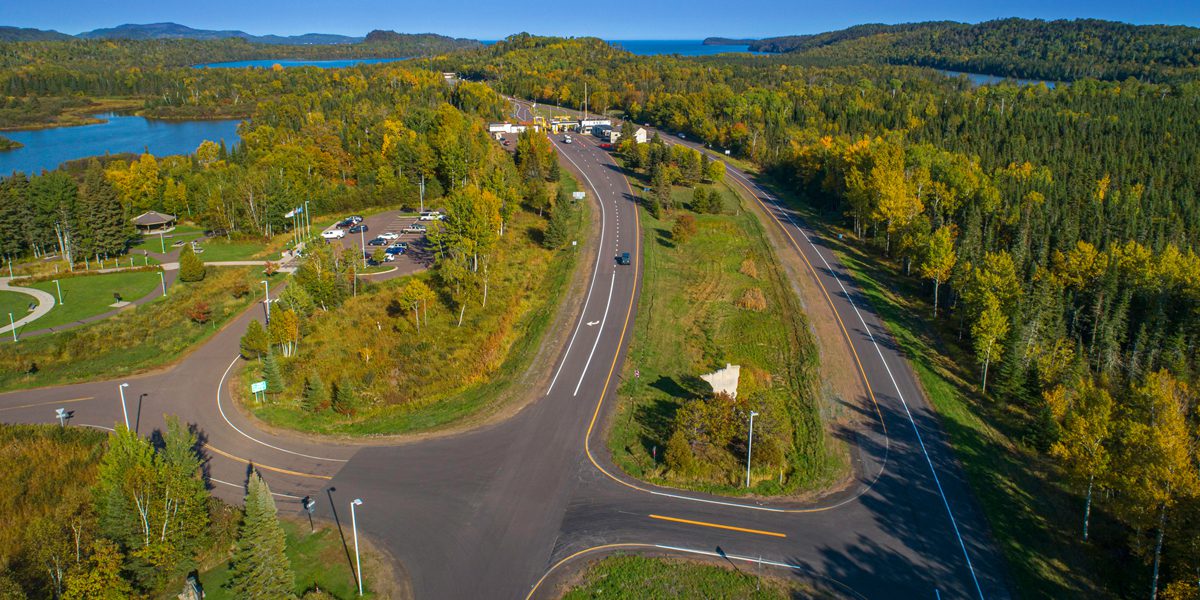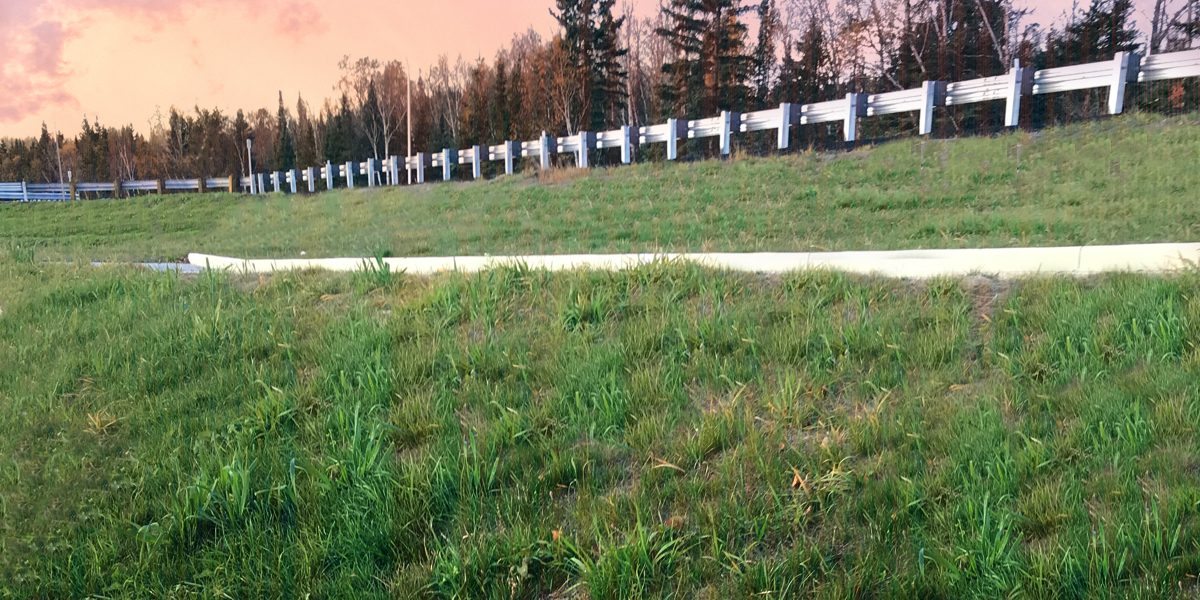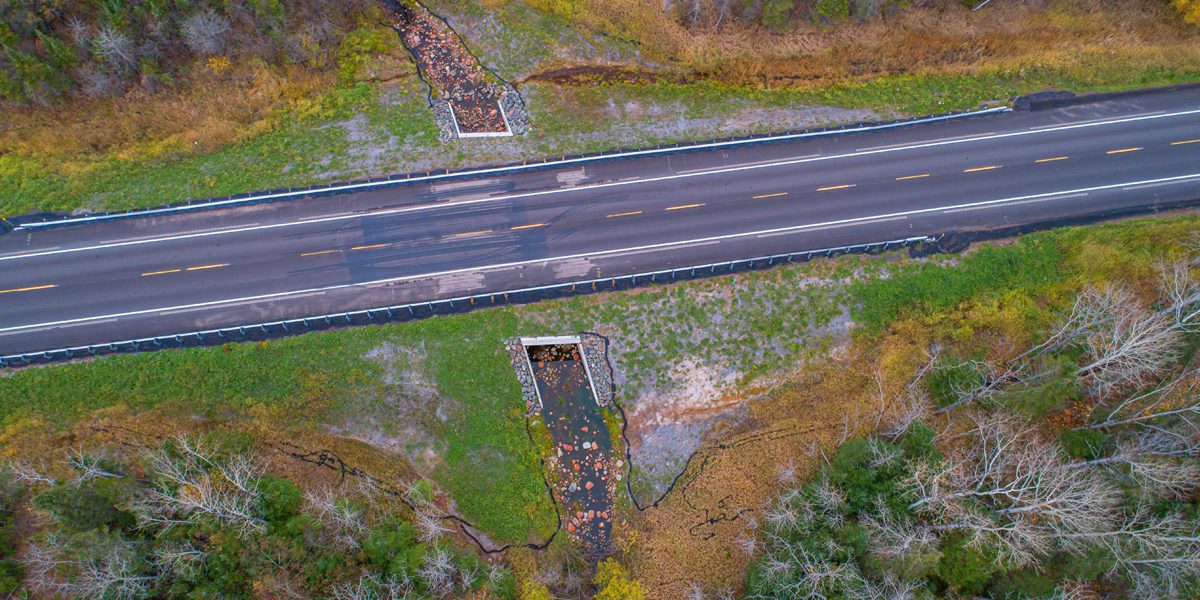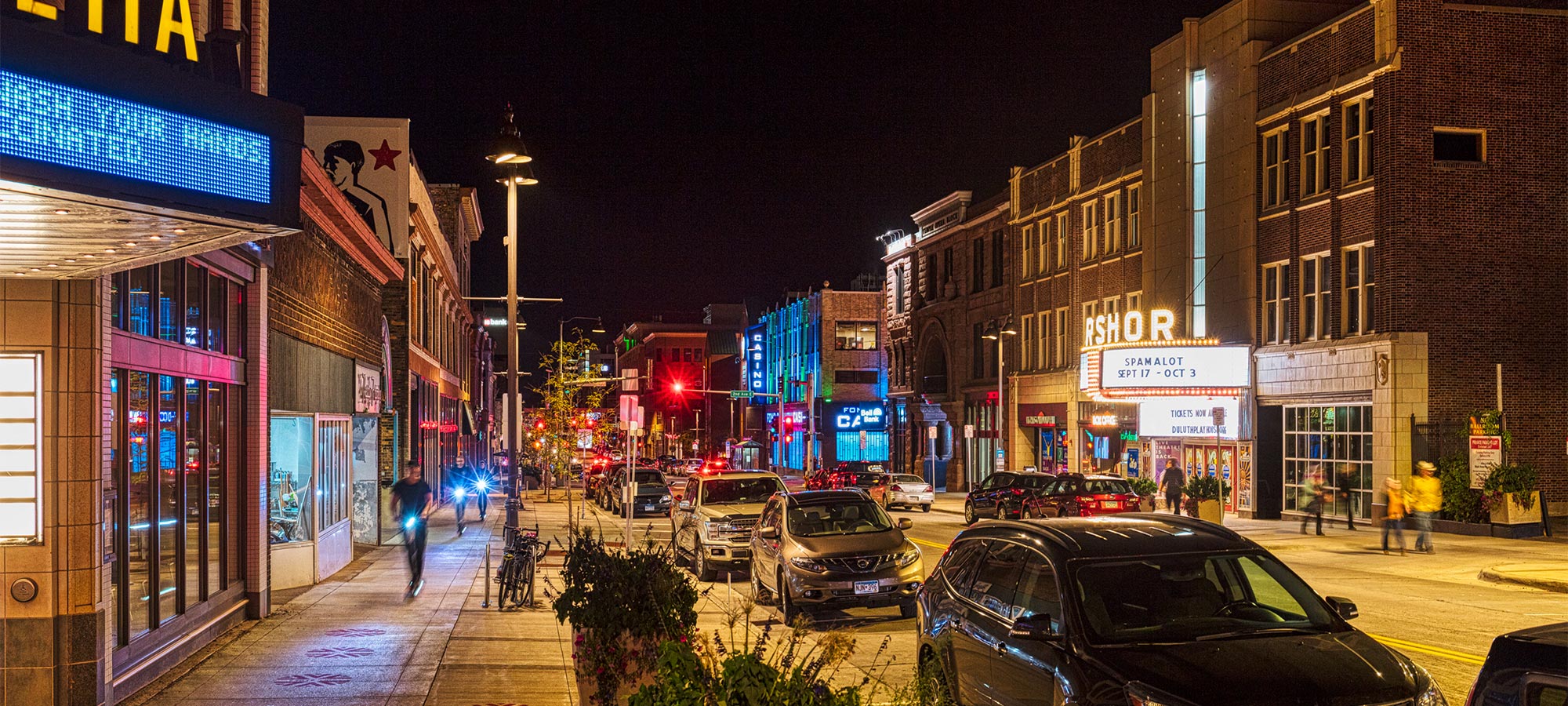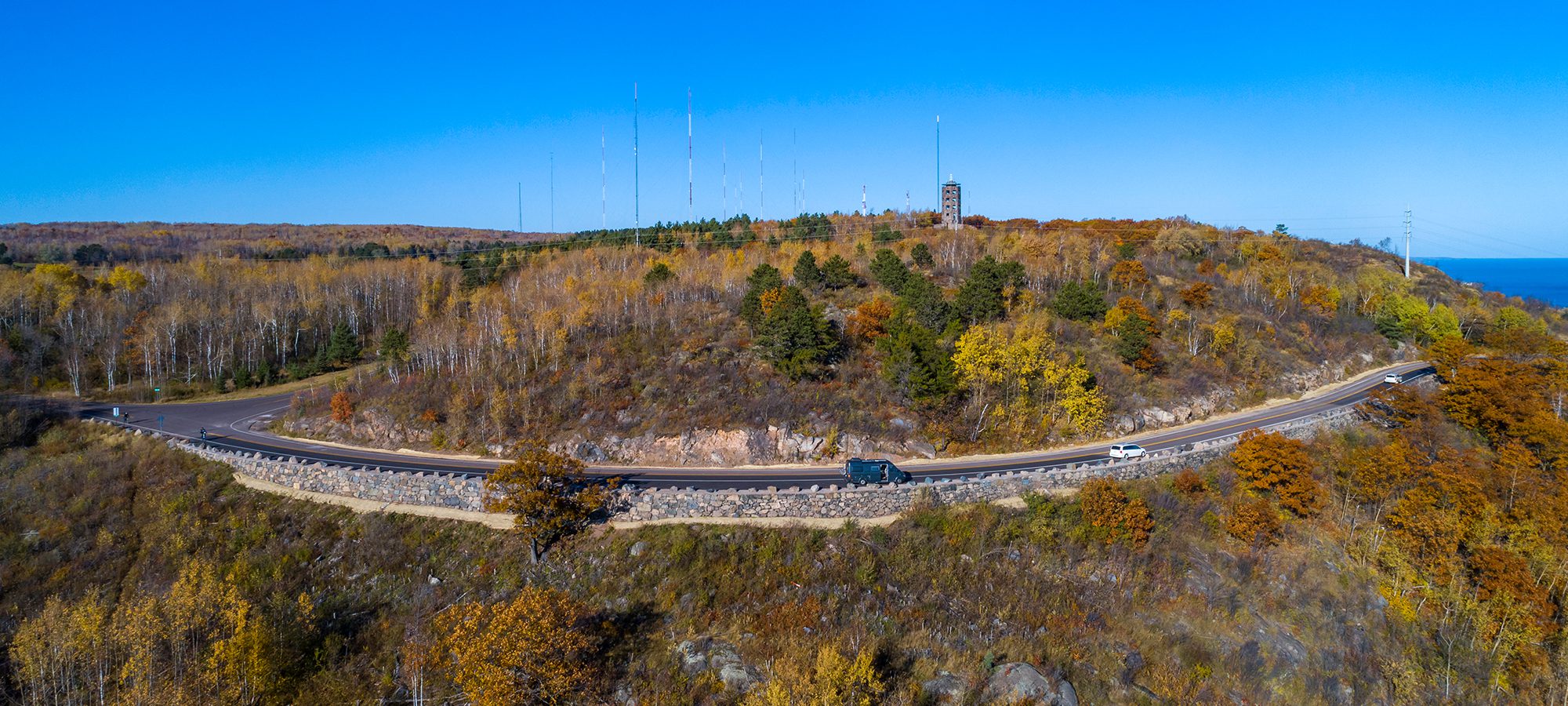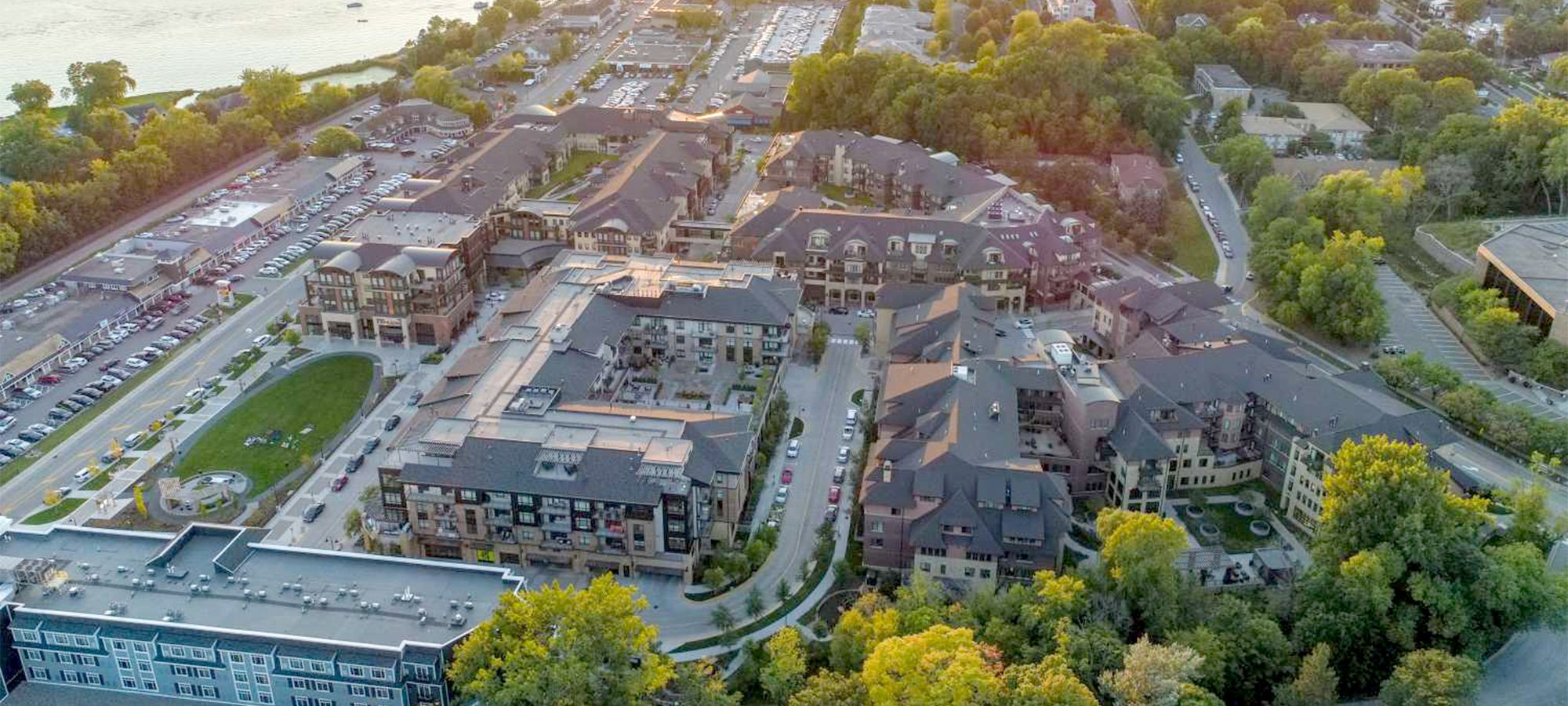TH 61 Grand Portage
Safety Balanced with Environmental Impact
Driven by deteriorating pavement conditions, high maintenance costs, and reduced load carrying capacity, the project rehabilitated pavement conditions of the northernmost 17-miles of Scenic Highway 61, across the Grand Portage Band of Lake Superior Chippewa Reservation to the U.S./Canadian Border. The core project improvements were planned to not only improve the ride but also extend the useful life of the highway.
LHB provided preliminary and final design services, as well as construction design support. LHB was relied on to provide design solutions that not only met the project’s purpose and need to rehabilitate the highway, but also improve safety for motorized and non-motorized users while minimizing the project’s environmental impacts.
In addition to a bituminous pavement reclamation and resurfacing of the highway, work also included adding turn lanes and bypass lanes at key intersections, intersection lighting, extensive guardrail construction, multi-modal safety upgrades, drainage improvements including bridge and box culvert construction, the reconstruction of scenic pull-offs, and lane modifications near the Port of Entry to Canada.
Constructed during the 2020 and 2021 construction seasons, the completed project was $1 million under budget and ahead of schedule.
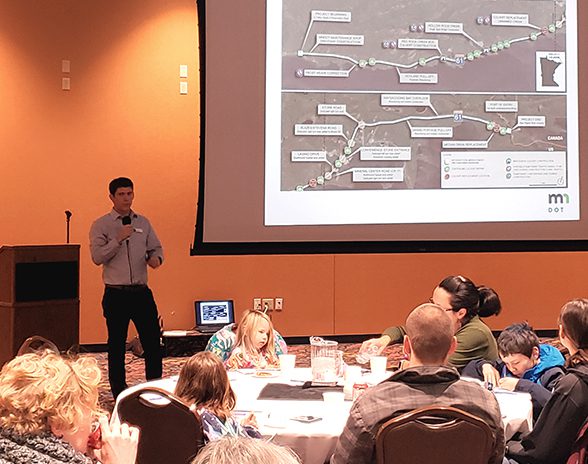
Stakeholder Engagement
Through various stakeholder engagement meetings with the Grand Portage Band, US Customs and Border Protection, regulatory agencies, residents, and businesses, LHB evaluated the project goals and provided site-specific solutions to meet stakeholder needs and develop a quality roadway that the community can be proud of.
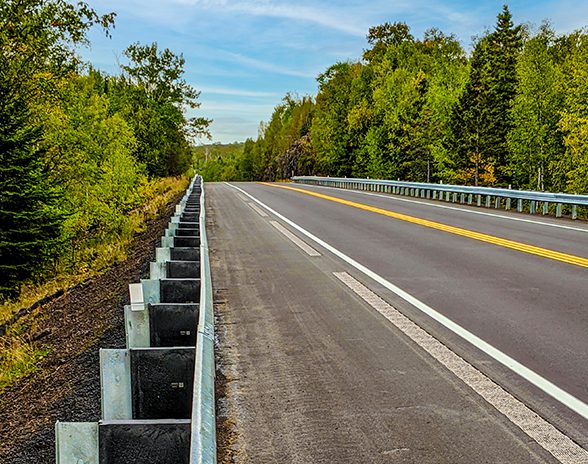
Guardrail Challenges
Over 31,000 feet of new guardrail was constructed. LHB worked with MnDOT to identify locations where shallow bedrock would conflict with standard guardrail construction practices and created special design details for installing new guardrails that met safety standards within the bedrock. These details were ultimately incorporated into MnDOT’s Standard Plans for use on future projects with similar conditions in Minnesota.
